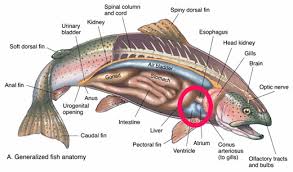There are many ways to lure in fish to your boat. Words like rigging, chumming, and luring come to mind. However, there are many varieties
when it comes to lures and trying to decipher between all of them can be a confusing process. In addition, knowing when to “chum” as oppose
to “lure” can be equally challenging when you are ready to catch the most fish that you can. Trout lures are our favorite lures.

When deciding whether you should lure or chum, you should be aware of what type of fish you are trying to catch. Chum is a mess to make,
distribute and to store so be sure that you are using it for the right reasons. Lures are used the majority of the time, but if you are dealing with
fish who heavily use their sense of smell, lures may be a waste of time. As a general rule of thumb, chum is used in order to bring fish to the
boat and lures are generally used for spot fishing.
When you decide to use a lure, what type do you choose? There are many different kinds
of lures and they are used in different regions for a variety of purposes. If you learn the
basics then you will not have to look like a novice by reading the back of the package will
perusing the aisles in the stores. Make sure to check out the trout lures.
A lure is defined as an object, often designed to resemble a fish’s prey, and they usually come equipped with one or more hooks that are used to
catch fish. You will attach a lure to the end of your fishing line and throw it out into the water until a fish takes a bite. The one exception to the
rule is the fly lure, which is used to float on the water’s surface mimicking the movement of an insect. You can also troll lure behind a boat to
create the appearance of a living animal in the water. Some of the different types of lures are classified as jigs, wobblers, spinner, spoon lures,
plugs, fly lures, and worms. But when fishing for trout make sure to purchase trout lures.

Jigs are made of weighted metal heads and a tail that is made from animal hair, soft plastic, feathers, or rubber. A minnow can sometimes to
be added or a piece of meat can be attached to the end of the hook. Jigs can be used for almost any kind of saltwater or freshwater fishing.
A spoon is a metal lure that looks similar to a bait fish. These lures are meant to be cast or to be trolled behind a moving vessel. The plastic
belts are the most commonly thought of baits. They are the plastic worms that are sometimes scented in order to attract more fish. The plastic
belts can be used with or without a weight, but a jig head, spinner, or a spinner bait always accompanies them.
Plugs are made from plastic or wood and can be used on top of the water. There is a separate category of plugs called diving plugs that are
designed to plunge into a certain depth of the water.
The spinners have blades that spin around a wire shaft, and they are made of plastic or animal hair. The spinner baits are the lures with more
than one blade that spin around a safety shaft. They are characterized by ‘skirts’, which are made of animal hair, vinyl, rubber, and other
materials.
Lastly are the poppers and flies. These baits are primarily used for panfish, trout, and bass. Fly-tying is a harder concept to learn, making these
trout lures unique.
Lures are tested and decided upon by the individual. Many lures are determined to be useful by trying
them out time and time again. When you become comfortable with a certain type of lure, you will be able to
expand on its possibilities, making it more individualized for your fishing purposes. You can use all types
of lures but trout lures come in handy more then you think.



